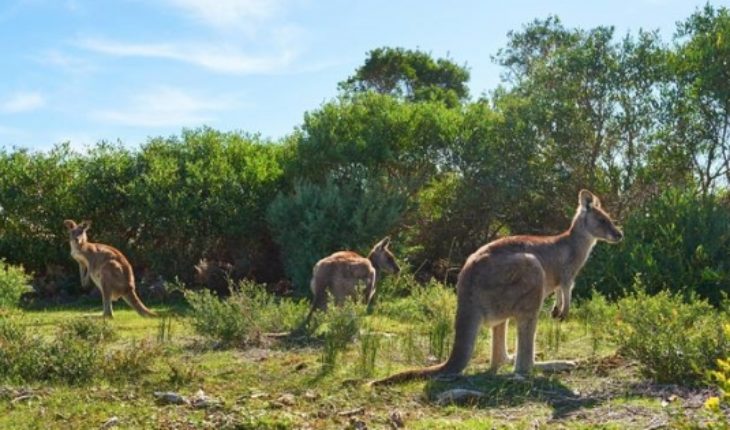One Night in November, wild animal keeper Greg Keightley captured a horrible picture with the camera. A group of men were killing kangaroos in the Blue Mountains National Park, three hours northwest of Sydney.
When Keightley first arrived in the area two years ago, he began volunteering for an NGO, helping to care for animals, especially injured kangaroos. At first he thought it was a quiet place until one night he heard gunshots. And he filmed what was going on around him. He wanted proof of the slaughter of the animals he was trying to protect himself. “Often, shooters come here high and shoot indiscriminately at any wild animal,” he told DW.
Crime sanctioned
Killing Kangaroos is a crime punishable by Australian authorities, whose National Parks and Wildlife service issues licenses to private shooters. The government has a national code of conduct, which describes how to fire a bullet into an animal’s head.
“The government wants public opinion to think it’s a quick and clean way to kill,” Keightley explained. “It’s anything but that, ” he said.
The night he recorded the incidents with the camera, he found a baby kangaroo lying on the grass. He had been separated from his mother’s bag while breastfeeding him.
Keightley also filmed a small group of men tying the little kangaroo’s mother to the van. There were dozens of them whose legs had been amputated. Even without his limbs, he said, they were still alive. “That way they don’t have to pay for a refrigeration truck, as an animal stays longer if it still breathes,” he said.
He says that it is done this way so that the animals reach their destination as fresh meat. They are transported to plants, where they are processed to obtain their skin and meat, sometimes also for human consumption, but in most cases for the export of pet food.
Kangaroo with baby kangaroo in his bag.
A plague?
Last year, Niall Blair, the New South Wales Primary Industries Minister, told the media that kangaroo populations had reached “the proportions of a plague.”
Based on complaints from some farmers, who criticized that marsupials ate the grass needed for sheep and livestock in a climate of continuous drought, Blair said his regional government “modifies the number of kangaroos that farmers can fire” and that corpses no longer need to be labeled. As a result of this measure, the number of dead animals is no longer recorded.
David Croft, an honorary member of the Faculty of Biological, Earth and Environmental Sciences at the University of New South Wales in Sydney, says kangaroos are becoming scapegoats for a human-caused problem. “What does proportions of a plague mean? In proportion to what?” he said. He believes Australia should address the real problem: the causes of the drought-exacerbating climate crisis.
Biologically impossible
Environmentalist Ray Mjadwesch, who received a conservation award from the Australian Wildlife Society, says kangaroo populations cannot naturally increase as if they were a pest: “This is a biological impossibility due to its slow cycle of reproduction.”
According to regional government data, the number of red kangaroos in central New South Wales fell from 5.1 million to 2.9 million in the past year, while the number of grey kangaroos increased from 3.9 million to 4 million.
Mjadwesch is critical of these figures: “Shooting rates outweigh those of population growth (of kangaroos), particularly during drought. It is not possible to increase the population in drought.” In addition, he believes that the government is trying to earn points with farmers and, at the same time, supporting the kangaroo meat industry.
Pet food
According to the Australian Department of Agriculture, some 3,000 tonnes of kangaroo meat is exported annually to 60 countries. According to the most recent available government statistics, dating back to 2003, 75% was used as pet food. Some environmentalists say the figure is now higher.
“Macro Meats,” Australia’s largest distributor of kangaroo meat and wild game, says animal capture is “responsible.” At the time of publication, the company had not responded to DW, but the company’s website claims that the organization buys meat from authorized shooters, who kill kangaroos according to the government’s code of conduct.
“What is the purpose of a code of conduct if it is not maintained or monitored? Is the pet food industry really so powerful that our wildlife has to be sacrificed, and shooters can act with impunity,” Keightley criticized.





